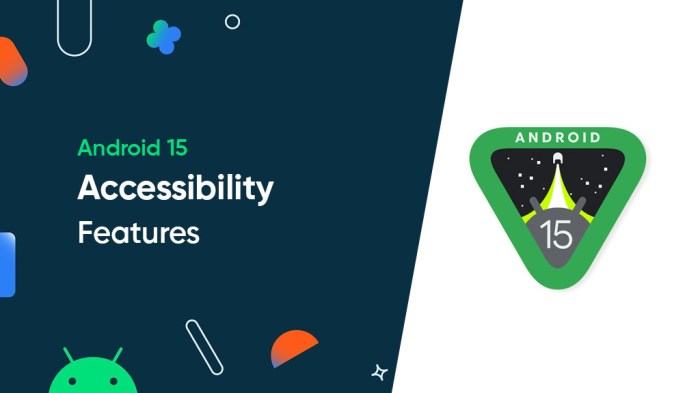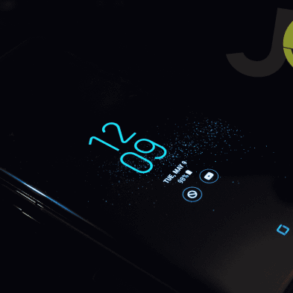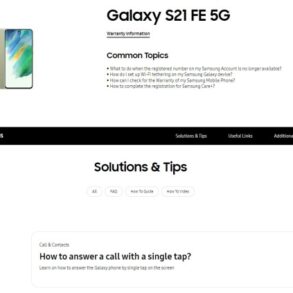Android 15 could support Bluetooth audio sharing, potentially revolutionizing how we listen to music and other audio content on our devices. This exciting prospect opens doors to seamless audio streaming between smartphones, headphones, and other Bluetooth-enabled accessories. Imagine effortlessly sharing your favorite tunes with friends or colleagues without the need for complicated setups or messy cables. This new feature could bring a significant improvement in user experience, but what are the technical details and potential drawbacks?
We’ll delve into the specifics of Bluetooth audio sharing, potential features of Android 15, compatibility issues, and security considerations.
This article explores the exciting possibilities of Bluetooth audio sharing in Android 15. We’ll look at how this new functionality could change the way we interact with audio, including potential use cases, technical implementations, and security concerns. The potential for improved interoperability and user experience across different devices and operating systems will also be discussed.
Introduction to Bluetooth Audio Sharing
Bluetooth audio sharing has become a ubiquitous feature in modern devices, seamlessly connecting audio sources to headphones or speakers without the need for tangled wires. This technology leverages Bluetooth’s short-range wireless communication to transmit audio data, providing a convenient and often superior alternative to wired connections. Its widespread adoption in smartphones, laptops, and even smart home devices highlights its significant impact on user experience.Different methods are employed for Bluetooth audio sharing, each with its own strengths and weaknesses.
The methods often rely on varying levels of audio quality, latency, and power consumption. This versatility allows users to tailor their audio sharing experience to their specific needs and environment. For instance, users prioritizing audio quality might opt for a method using higher-bit rate codecs, while those needing lower latency might select a different protocol.
Methods of Bluetooth Audio Sharing
Bluetooth audio sharing employs various methods to transmit audio data wirelessly. These methods often use different codecs (encoding schemes) and protocols for optimal performance in various scenarios. The primary methods usually involve a source device (like a phone or tablet) and a destination device (like headphones or a speaker).
- Atypical Methods: Many Bluetooth audio sharing methods are now integrated with other protocols like A2DP (Advanced Audio Distribution Profile) and AVRCP (Audio/Video Remote Control Profile) for managing audio playback. A2DP is commonly used for stereo audio transmission. AVRCP enables remote control of audio playback.
Hardware Components in Bluetooth Audio Sharing
The hardware components involved in Bluetooth audio sharing vary based on the device configuration. However, several key components are common across different implementations.
- Bluetooth Transceiver: This component is the heart of the Bluetooth connection. It’s responsible for sending and receiving audio data via the Bluetooth protocol. Its quality directly affects the transmission reliability and audio quality.
- Audio Codec: The audio codec determines how the audio signal is encoded for transmission. Different codecs offer different levels of compression and quality.
- Digital-to-Analog Converter (DAC): This component converts the digital audio signal from the source device into an analog signal for output to the headphones or speakers.
- Analog-to-Digital Converter (ADC): Conversely, for receiving devices, the ADC converts the analog signal from the headphones or speakers back into a digital signal for processing.
Bluetooth Audio Codecs
Various codecs are used in Bluetooth audio sharing, each with its own strengths and weaknesses regarding audio quality, latency, and power consumption. The choice of codec often depends on the specific requirements of the application.
| Codec | Strengths | Weaknesses |
|---|---|---|
| SBC (Scalable Bluetooth Codec) | Widely supported, low complexity, low latency | Lower audio quality compared to other codecs |
| AAC (Advanced Audio Coding) | Higher audio quality, good balance of quality and efficiency | Higher complexity, may have slightly higher latency |
| aptX | Good audio quality, low latency | May not be supported on all devices |
| aptX HD | High-resolution audio, exceptional quality | Higher complexity, may require more processing power |
Android 15 and its Potential Features
Android 15, the next major iteration of Google’s mobile operating system, is poised to introduce significant improvements across various functionalities, including audio sharing. While precise details are still emerging, early indications suggest a focus on enhanced performance, improved user experience, and integration with other services. This update is expected to build upon the foundations laid by previous versions, further refining the mobile experience for users.The current known specifications and features of Android 15, along with potential new features and improvements in audio sharing, are still largely speculative.
However, based on trends in mobile operating system development and user feedback, several possibilities can be explored. This analysis focuses on potential advancements in Bluetooth audio sharing, anticipating that Google will leverage the latest technological advancements to enhance user experience and address limitations in existing systems.
Known Specifications and Features
Android 15 is expected to bring several enhancements to the operating system, such as improved battery optimization, enhanced security features, and streamlined system performance. The specific functionalities within the audio sharing domain are still largely unknown. However, these advancements are anticipated to improve the stability and efficiency of Bluetooth audio transmission.
Potential New Features in Audio Sharing
Several new features related to audio sharing are plausible. For example, a possible new feature could be support for higher-quality audio codecs, enabling users to experience richer and more immersive sound when sharing audio content through Bluetooth. This could be especially beneficial for users who require high-fidelity audio, such as audiophiles or professionals. Another potential feature could involve the ability to dynamically adjust audio quality based on the connection’s strength, automatically switching between different codecs to maintain a stable and high-quality audio stream.
Potential Improvements in Existing Audio Sharing Functionalities
Existing audio sharing functionalities in Android could be improved in several ways. One area of improvement could be enhanced compatibility with a wider range of Bluetooth audio devices. This could involve improved support for various Bluetooth codecs, ensuring seamless connectivity with a wider variety of devices and potentially solving compatibility issues. Furthermore, improved stability and reliability of audio connections are also likely to be addressed.
Android 15’s potential for Bluetooth audio sharing is pretty exciting. It’s a big deal for seamless audio experiences. Meanwhile, news about the Hyperkin competition Xbox controller, featuring hall effect drift-free sticks for PlayStation, is certainly interesting, especially in the context of improved controller performance. hyperkin competition xbox controller hall effect drift free sticks playstation announcement specs But ultimately, Android 15’s audio sharing features could be a game-changer for mobile gaming and multimedia consumption.
Reduced latency and jitter could be achieved, providing a smoother and more immersive audio experience.
Possible Improvements to Bluetooth Audio Sharing in Android 15
| Feature | Description | Impact |
|---|---|---|
| Enhanced Codec Support | Improved support for a broader range of audio codecs, including lossless formats. | Higher audio quality, compatibility with a wider range of devices. |
| Dynamic Audio Quality Adjustment | Automatic selection of the best audio codec based on the Bluetooth connection’s strength. | Stable and high-quality audio stream even in challenging connection environments. |
| Reduced Latency and Jitter | Minimizing delay and inconsistencies in the audio stream. | Smoother and more immersive audio experience. |
| Improved Compatibility with External Audio Devices | Enhanced compatibility with a wider variety of Bluetooth audio devices. | Seamless connectivity with a greater range of audio devices. |
| Enhanced Background Audio Handling | Improved management of audio streams during background usage. | Maintain audio playback even when the application is not in the foreground. |
Compatibility and Interoperability: Android 15 Could Support Bluetooth Audio Sharing

Bluetooth audio sharing in Android 15 promises a seamless experience, but its success hinges on compatibility across various devices and operating systems. The ability to share audio effortlessly between different Android versions and other platforms, like iOS, is crucial for widespread adoption. This section explores the nuances of compatibility and interoperability, highlighting potential challenges and solutions.
Bluetooth Version Compatibility
Bluetooth audio sharing functionality relies on the Bluetooth protocol’s stability and consistency across different versions. Different Bluetooth versions support varying levels of audio codecs, bitrates, and connection speeds. A device using a newer, more advanced Bluetooth version will likely experience better audio quality and range than an older one. For example, Bluetooth 5.0 offers enhanced range and speed compared to Bluetooth 4.2.
This difference can lead to compatibility issues when pairing devices with differing Bluetooth versions. To ensure seamless sharing, Android 15 likely needs to support a common audio codec profile to minimize these discrepancies.
Android Device Compatibility
Android devices, even those running the same version of Android, may exhibit variations in Bluetooth hardware. Different manufacturers employ diverse Bluetooth chips and drivers, potentially leading to inconsistencies in audio quality and performance. For instance, one manufacturer might use a more efficient Bluetooth chip than another, affecting the audio transmission speed and signal strength. This variation in hardware could cause incompatibility issues, especially with older devices.
Cross-Platform Compatibility
Compatibility with other operating systems, particularly iOS, is a critical factor for widespread adoption. To facilitate this, Android 15 may need to implement common audio profiles and protocols to enable seamless audio sharing between devices with different operating systems. While Bluetooth audio sharing is a promising feature, its success hinges on ensuring compatibility across various platforms. For instance, a potential solution might involve a standardized protocol that allows for interoperability between Android and iOS devices, enabling the seamless sharing of audio between them.
Wi-Fi Compatibility
The integration of Bluetooth audio sharing with Wi-Fi is an important aspect to consider. In some scenarios, Wi-Fi might offer a more efficient way to share audio, especially for larger distances or when Bluetooth connectivity is unreliable. Android 15 might leverage Wi-Fi for scenarios where a high-bandwidth audio stream is needed. For example, if a user is in a Wi-Fi-enabled environment and wants to share audio from their Android device to another Bluetooth-enabled device, the system might automatically select Wi-Fi as the preferred method for sharing.
Potential Challenges and Solutions
Interoperability issues can arise from variations in Bluetooth versions and Android device hardware. To address these challenges, Android 15 likely needs to employ a flexible audio profile that adapts to the capabilities of the devices involved. Furthermore, open standards and collaborations with other operating systems and hardware manufacturers will be crucial to minimize the risk of incompatibility. For example, standardized profiles will reduce the likelihood of issues arising from different hardware configurations.
Illustrative Table: Android Device Bluetooth Compatibility
| Android Device | Bluetooth Version | Compatibility Notes |
|---|---|---|
| Google Pixel 7 Pro | Bluetooth 5.3 | Excellent compatibility with newer devices |
| Samsung Galaxy S22 | Bluetooth 5.2 | Good compatibility, but may have minor performance differences with Bluetooth 5.3 devices. |
| OnePlus 11 | Bluetooth 5.2 | Good compatibility, but may experience slight variations in audio quality compared to 5.3. |
| Older Android Devices (e.g., 2018 models) | Bluetooth 5.0 or earlier | Potential compatibility issues with newer devices. |
Technical Aspects of Implementation
Bluetooth audio sharing in Android 15 introduces a range of technical considerations, impacting both the core system and application development. Successfully integrating this feature requires careful planning and execution to ensure seamless functionality and compatibility across diverse hardware and software configurations. The key challenge lies in achieving interoperability, guaranteeing that devices from different manufacturers can share audio flawlessly.
Core System Considerations
The Android 15 Bluetooth audio sharing implementation necessitates improvements to the existing Bluetooth stack. This includes optimizing the protocol handling for audio streams, ensuring low latency and high-quality audio transmission. The system needs to handle varying audio codecs and bitrates, supporting different audio profiles and device capabilities. Furthermore, robust error handling and robust security mechanisms are crucial to prevent vulnerabilities and ensure data integrity during transmission.
Application Development Challenges and Solutions
Developing applications that leverage Bluetooth audio sharing necessitates new APIs and SDKs to facilitate easy integration. The current Android ecosystem has a multitude of audio handling libraries and frameworks. Integrating with these diverse components smoothly requires careful design and a well-defined API structure to ensure seamless communication and data transfer. Challenges in compatibility and interoperability are anticipated, particularly concerning the management of different audio formats.
Addressing this necessitates the development of standardized interfaces and common protocols, facilitating communication between applications and the underlying Bluetooth stack. This approach ensures that applications can be designed to handle various audio formats with minimal modifications.
Bluetooth Audio Sharing Flow
The Bluetooth audio sharing process involves several steps, as detailed in the following flowchart:
+-----------------+
| Device A |
+---------+-------+
| Initiate | |
| Sharing | |
+---------+-------+
| | | |
| v | |
+---------+-------+
| Bluetooth | |
| Stack | |
+---------+-------+
| | | |
| v | |
+---------+-------+
| Connect | |
| to B | |
+---------+-------+
| | | |
| v | |
+---------+-------+
| Negotiate | |
| Format | |
+---------+-------+
| | | |
| v | |
+---------+-------+
| Stream | |
| Audio | |
+---------+-------+
|
|
+-----------------+
| Device B |
+---------+-------+
| Accept |
| Sharing |
+---------+-------+
This flowchart illustrates the sequence of events involved in the Bluetooth audio sharing process, from initiation to the actual audio stream transmission.
Each step represents a critical interaction between the devices and the underlying Bluetooth stack.
Android 15 potentially supporting Bluetooth audio sharing is pretty cool, right? Thinking about how seamlessly this could integrate with other tech, like the intriguing trailer for “The Deuce” starring James Franco and Maggie Gyllenhaal on HBO the deuce trailer james franco maggie gyllenhaal hbo. It makes me wonder if future phone designs will have even more streamlined audio solutions.
Android 15’s potential is definitely exciting!
Impact on Existing Applications
The introduction of Bluetooth audio sharing in Android 15 has the potential to significantly enhance the functionality of existing Android applications. Applications that already support audio playback, such as music players or video players, can now easily incorporate this feature, allowing users to share audio wirelessly with other compatible devices. This advancement opens up possibilities for enhanced collaboration and communication within applications.
Potential Use Cases and Benefits

Bluetooth audio sharing in Android 15 promises a significant leap forward in seamless audio experiences. This feature, allowing multiple devices to share audio streams wirelessly, opens doors to a variety of innovative applications, enhancing user convenience and interoperability across different devices. The potential for improved collaboration, entertainment, and accessibility is substantial.
Enhanced Collaboration
This feature offers enhanced collaboration capabilities by allowing multiple users to share audio simultaneously. Imagine a group of colleagues collaborating on a project, each with their own device, yet all listening to the same audio stream, like a presentation or shared audio feedback. This eliminates the need for cumbersome wired connections or multiple separate audio streams. It facilitates a more immersive and efficient collaborative environment.
Improved Entertainment Experiences
Sharing audio between devices expands the possibilities for entertainment. A user could stream music from their phone to a smart speaker while simultaneously listening to a podcast on their tablet. They could also play games with friends, sharing the audio of the game on multiple devices for a more immersive experience. This functionality opens the door to truly integrated, multi-device entertainment ecosystems.
Accessibility Enhancements
The accessibility benefits are considerable. Individuals with visual impairments might use Bluetooth audio sharing to stream audio content to their assistive listening devices. This allows for a more inclusive experience, enabling them to enjoy media content without the need for complex setups. Similarly, this technology could enable a wider range of assistive tools.
Improved Multi-Device Audio Sharing
Bluetooth audio sharing simplifies the process of streaming audio across various devices. A user can effortlessly stream music from their phone to a smartwatch, headphones, or even a car stereo, all wirelessly and seamlessly. This simplifies the management of audio sources and improves the overall user experience.
Table Summarizing Benefits
| Use Case | Benefit |
|---|---|
| Enhanced Collaboration | Improved efficiency, immersive experience, elimination of wired connections. |
| Improved Entertainment Experiences | More integrated, multi-device entertainment, seamless transitions between devices. |
| Accessibility Enhancements | Inclusive experience for individuals with visual impairments, access to a wider range of assistive tools. |
| Improved Multi-Device Audio Sharing | Simplified audio streaming across devices, enhanced user experience. |
Security Considerations
Bluetooth audio sharing, while promising, introduces new security challenges. Protecting user data and ensuring the integrity of audio streams is paramount. Android 15’s implementation must address potential vulnerabilities to maintain user trust and prevent malicious activities. Robust security protocols are crucial for a secure and reliable experience.
Potential Vulnerabilities
Several potential vulnerabilities can compromise the security of Bluetooth audio sharing. Eavesdropping on the audio stream is a significant concern, especially in public or shared environments. Unauthorized access to the device’s audio output, manipulation of the audio data, and denial-of-service attacks are other possibilities. These vulnerabilities necessitate careful design and implementation to mitigate risks.
Security Protocols in Bluetooth Audio Sharing, Android 15 could support bluetooth audio sharing
Security protocols play a critical role in securing Bluetooth audio sharing. They ensure confidentiality, integrity, and authentication of the audio stream. Robust encryption algorithms, along with authentication mechanisms, are essential components of these protocols. Properly implemented protocols can effectively prevent unauthorized access and ensure data integrity.
Encryption Algorithms and Their Effectiveness
Bluetooth uses a variety of encryption algorithms to secure audio transmissions. AES (Advanced Encryption Standard) is a common choice, providing strong encryption for confidentiality. The effectiveness of these algorithms depends on the implementation, key management, and protocol integration. Weaknesses in any of these areas can compromise the security of the audio stream.
| Protocol | Description | Effectiveness |
|---|---|---|
| AES-CCM | Combines Advanced Encryption Standard (AES) with Counter with CBC-MAC (CCM) for authenticated encryption. | High effectiveness, widely used for its efficiency and security. |
| AES-GCM | Uses AES with Galois/Counter Mode (GCM) for authenticated encryption. | High effectiveness, known for its speed and efficiency. |
| Other Encryption Protocols | Proprietary or custom encryption methods may be used in specific implementations. | Effectiveness depends on the design and implementation details. |
Importance of Authentication Mechanisms
Authentication mechanisms are crucial for verifying the identity of devices participating in the audio sharing session. These mechanisms prevent unauthorized devices from joining the session and ensure that only trusted devices can access the audio stream. Implementing strong authentication protocols is essential to maintaining the security of the system.
Mitigation Strategies
Various mitigation strategies can strengthen the security of Bluetooth audio sharing. Regular security audits, robust testing procedures, and incorporating industry-standard security practices are crucial for identifying and addressing potential vulnerabilities. Additionally, strong key management and secure communication channels are essential.
User Interface and Experience
The user interface (UI) for Bluetooth audio sharing in Android 15 needs to be intuitive and seamlessly integrated into the existing Android ecosystem. A well-designed UI will ensure users can easily discover, set up, and use the feature without confusion. This streamlined experience is crucial for the feature’s adoption and positive user feedback.
A primary consideration in the UI design is minimizing the steps required for users to initiate and manage Bluetooth audio sharing. This reduces friction and enhances the overall user experience. Furthermore, clear visual cues and feedback are vital to guide users through the process, ensuring a positive and productive interaction with the feature.
User Interface Design Principles
The UI design for Bluetooth audio sharing should prioritize clarity, simplicity, and consistency with existing Android design guidelines. This consistency will ensure a familiar and intuitive experience for users. Visual elements, such as icons and color schemes, should be easily understandable and reinforce the intended action. A user-friendly design will greatly increase the adoption rate and user satisfaction.
User Interactions for Setup and Use
The process for setting up Bluetooth audio sharing should be straightforward. The UI should guide the user through a series of simple steps. Initially, the user should be able to quickly identify the Bluetooth audio sharing option within the device’s settings. Once selected, the user should be presented with a list of available Bluetooth devices. After pairing, a confirmation message will inform the user about the successful connection.
- The user interface should display a dedicated tile or icon in the quick settings panel for quick access to Bluetooth audio sharing settings. This would allow users to initiate or manage sharing with a single tap.
- The user should be able to easily select the audio source (e.g., phone, music app) for sharing.
- Clear visual indicators (e.g., a small speaker icon or a progress bar) should display the status of the connection, such as connecting, connected, or disconnecting. This would improve the user’s understanding of the connection process.
Improving User Experience
Several elements can enhance the user experience of Bluetooth audio sharing. The system should provide visual feedback during the connection process. A simple animation or progress bar can provide a sense of the feature’s operation.
- Implementing a feature that automatically detects and connects to previously paired Bluetooth audio devices for quick access will be beneficial. This would improve convenience and save time.
- Offering a list of recently used Bluetooth audio devices, accessible through a dedicated section in the settings, will streamline the process of selecting a device for sharing.
- Providing users with the ability to customize the volume levels for the shared audio output will improve the quality of the audio experience.
User Interface Mockup
This mockup displays a simplified view of the Bluetooth audio sharing interface. The table shows potential UI elements, allowing users to quickly discover and initiate the sharing process.
Android 15’s potential for Bluetooth audio sharing is exciting. Imagine effortlessly streaming your favorite tunes to your headphones. This feature could really enhance the user experience, but you might also want to explore how you can automatically download recently played songs from YouTube Music. Checking out this guide on YouTube Music auto download recently played songs might provide some interesting insights into how you can make the most of your audio experience.
Ultimately, Android 15’s Bluetooth audio sharing capabilities could revolutionize how we listen to music.
| Element | Description |
|---|---|
| Bluetooth Audio Sharing | Main heading, prominently displayed |
| Available Devices | List of nearby Bluetooth devices ready for sharing. |
| Device Name | Name of the Bluetooth device |
| Connection Status | Visual indicator (e.g., icon) displaying connection status. |
| Audio Source Selection | Options to choose the audio source for sharing. |
| Volume Control | Slider or buttons to adjust the volume of the shared audio. |
| Disconnect Button | Button to disconnect from the current Bluetooth device. |
Comparison with Other Platforms
Bluetooth audio sharing is a feature increasingly common across various operating systems. Android 15’s implementation aims to improve on existing solutions and offer a more seamless user experience. Comparing it with other platforms like iOS and Windows reveals both strengths and weaknesses in each approach. Understanding these comparisons allows us to identify potential areas for improvement and innovation in Android’s implementation.
A key consideration in evaluating Bluetooth audio sharing across platforms is the level of interoperability. Successful sharing depends not only on the implementation within a single OS, but also on how well different systems communicate and cooperate. This interoperability is crucial for seamless playback of audio between devices running different operating systems.
Bluetooth Audio Sharing Features Across Platforms
Different operating systems vary significantly in their implementation of Bluetooth audio sharing. This diversity in features impacts user experience and interoperability. The following table highlights some key differences.
| Feature | Android 15 | iOS | Windows |
|---|---|---|---|
| Multi-device support | Potentially supports multiple devices simultaneously for audio streaming. | Limited support for simultaneous audio streaming to multiple devices; typically focuses on a single device at a time. | Supports multiple devices for audio streaming, depending on the specific Windows version and hardware capabilities. |
| Codec support | Likely to support a wide range of codecs, including common standards like SBC, AAC, and potentially newer codecs. | Generally supports common codecs like AAC and aptX, but the full range may depend on the specific iOS version and device. | Windows supports a range of codecs, often including SBC, AAC, aptX, and others, though availability can depend on the device’s Bluetooth capabilities. |
| Latency | Focuses on minimizing latency for a more responsive audio experience. | Latency is a significant factor; the quality and consistency can vary depending on the device and the audio stream. | Latency is usually a concern, particularly in complex scenarios with multiple devices or high-quality codecs. |
| User Interface | Aims for intuitive pairing and connection processes, potentially with simplified controls. | Generally has a user-friendly interface for pairing and playback controls. | User interface varies depending on the specific Windows version and device; typically involves standard Bluetooth pairing processes. |
Potential Areas for Future Improvements in Android 15
While Android 15 is expected to provide a strong Bluetooth audio sharing feature, several areas could be enhanced. For example, improving the compatibility with legacy devices and older Bluetooth codecs would broaden the potential user base. Also, more robust handling of various audio quality levels would enhance the overall audio experience. Enhanced multi-device audio streaming, perhaps with seamless transitions between connected devices, would represent a significant improvement.
Strengths and Weaknesses of Existing Implementations
iOS generally excels in user experience and ease of use, often prioritising simplicity over complex features. Windows, with its diverse ecosystem, frequently offers more granular control options for advanced users. Android, on the other hand, aims for a balance between user-friendliness and extensibility. Each platform has its strengths and weaknesses, and the choice often depends on the user’s specific needs and expectations.
Epilogue
In conclusion, Android 15’s potential Bluetooth audio sharing feature promises a significant leap forward in audio connectivity. While challenges like interoperability and security need careful consideration, the potential benefits are substantial. From seamless streaming to enhanced user experience, this feature could redefine how we enjoy audio on our Android devices. The future of audio sharing on Android is looking brighter than ever.












